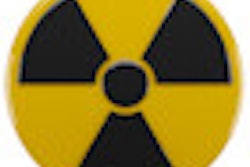Rectangular collimation can significantly reduce radiation exposure for adults undergoing dental x-rays, according to a study being presented this week at the International Association for Dental Research (IADR) conference in Seattle.
The potential risks associated with dental radiography have gained notoriety following the International Commission on Radiological Protection's 2007 modification of weighting factors for calculating effective dose, noted the study authors, from the University of North Carolina at Chapel Hill. This, in turn, has prompted new interest in ways to reduce patient dose, such as rectangular collimators.
For this study, they compared the effective dose using circular and rectangular collimator modalities by exposing 90 simulated full-mouth series using three collimators: 6-cm diameter circular collimator, Rinn universal rectangular (standard) collimator, and Tru-Align rectangular (test) device (Interactive Diagnostic Imaging).
The collimators were used on both adult (18 projections) and child (12 projections) ATOMmax phantoms. Exposures were made with a Planmeca Prostyle unit using 70 kVP, 8 mA, with exposures ranging from 0.20 sec to 0.32 sec for the adult phantoms and 0.16 sec to 0.25 sec for the child phantoms. Dosimetry was acquired using optically stimulated luminescence dosimeters placed at 24 anatomical sites in the head and neck region.
The mean adult effective dose was significantly different (p = 0.001) among the three collimators, the researchers found: circular (95 µSv), test rectangular (76 µSv), and standard rectangular (59 µSv). Child doses were significantly different (p = 0.0005) between standard rectangular (46 µSv) and circular (72 µSv), as well as between standard rectangular and test rectangular (64 µSv). The researchers found no significant difference in dose between the test rectangular and circular collimators.
While rectangular collimation appeared to significantly reduce dose in the adult exposures, significant dose reduction in the child exposures was achieved only with the standard rectangular collimator when compared with the circular collimator, the researchers concluded.



















